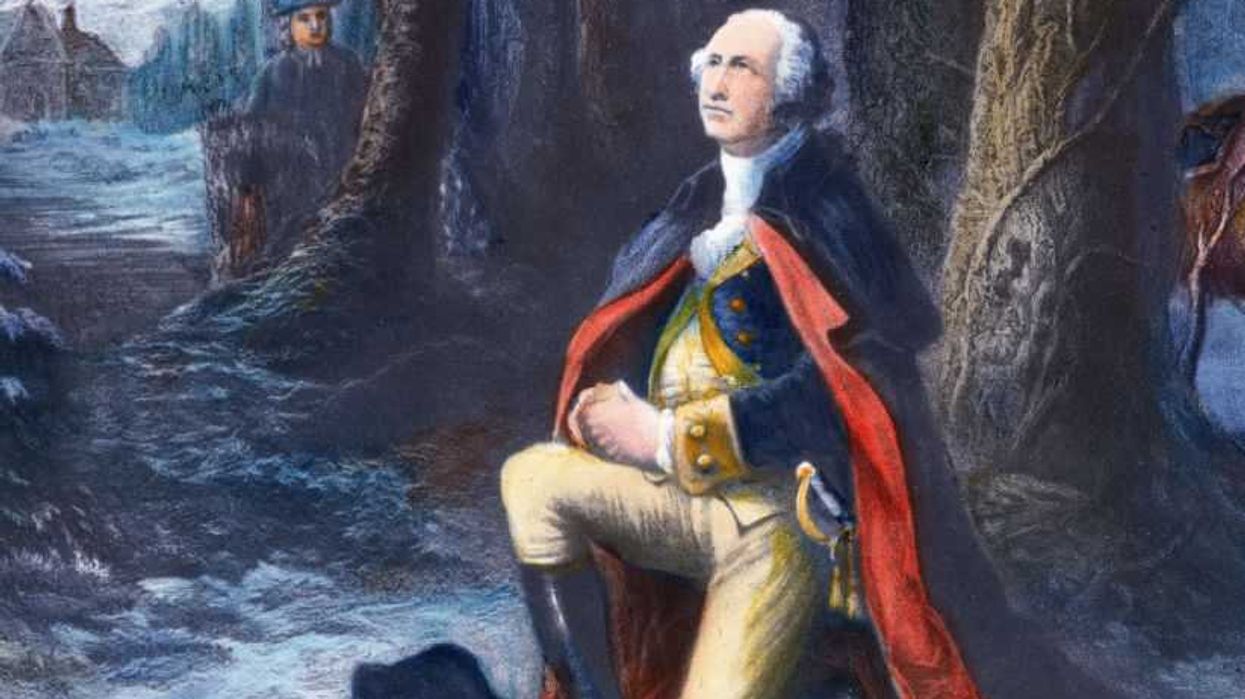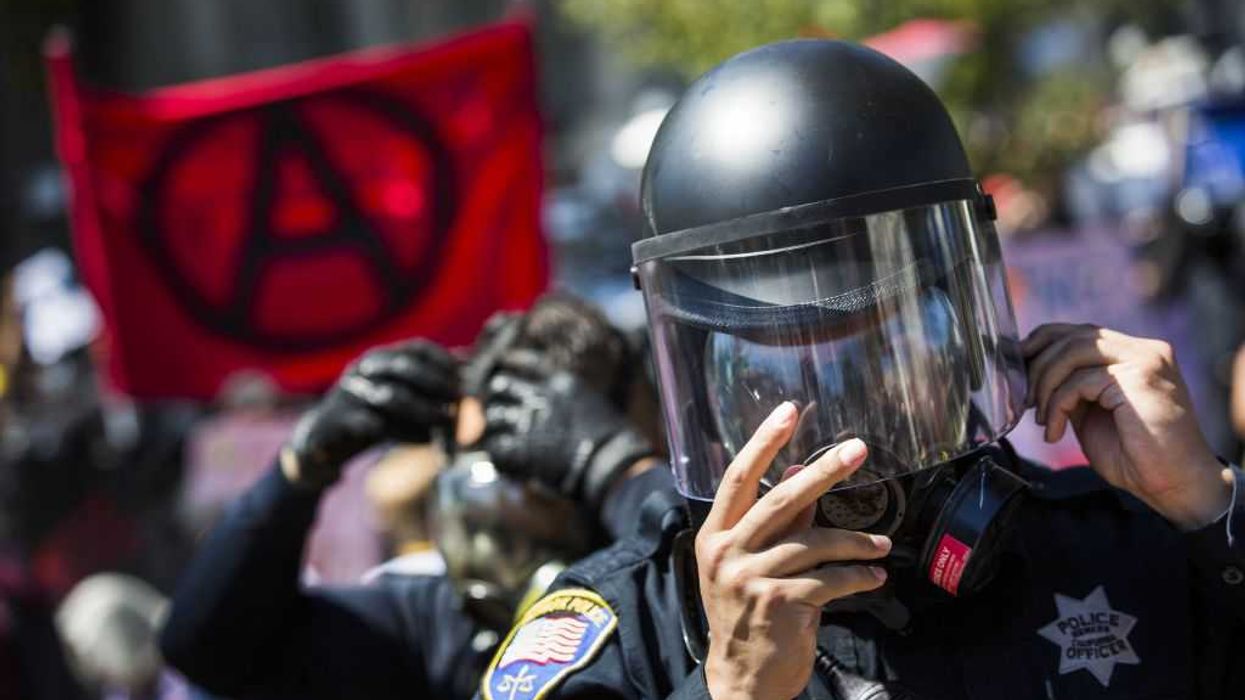On radio Wednesday, Glenn spoke with Stu Weber, a life-time NRA member, who has taken matters into his own hands in starting a petition to recall Grover Norquist from the NRA board.
This fascinated Glenn, who said Norquist is among the "top ten most dangerous men in America on the right because you don't see him coming."
Listen to the exchange or read the transcript below.
Below is a rush transcript of this segment, it might contain errors.
GLENN: Grover Norquist is a guy that honestly when the left used to say, you know, Grover Norquist, he's a bad guy. He's a real puppet master. I was like, I don't even know who Grover Norquist is. We used to ridicule people who said he was a bad guy.
PAT: We used to do Grover Sesame jokes.
GLENN: Right. Because he --
PAT: Silly to us.
GLENN: Like a lizzie (phonetic). Then we found out who Grover Norquist is. Grover Norquist, most people just think of him as a low tax guy or a free market guy. He's a very dangerous guy. Very dangerous. I believe on the right, he is one of the more dangerous people on the right. Probably top ten most dangerous men in America on the right because you don't see him coming. You don't know who he is or what he's capable of or really what his viewpoint is. He's done so much to enable the Muslim Brotherhood and radicalized Islam here in America, that it is -- it's inexcusable and there's no way -- I mean, we had him on the show. And took him apart. And there's no way to answer logically anything that he is trying to defend. He is friends with some of the worst people in the world, and business associates.
So, anyway, we did this exposé and the NRA is doing an investigation on him. And somebody brought to my attention a new website called Recall Grover Norquist. I think it's called recallGrover.com. And Stu Weber is the guy who started this. And we wanted to get him on. Hi, Stu, how are you?
STU WEBER: I'm very fine, Glenn. A little intimidated talking to the king of talk, you know.
GLENN: Yeah, I know. Well, you going to be talking to Rush later? Because now you're just talking to me.
So, Stu, tell me why you're doing this.
STU WEBER: Well, I'm one of the little people that's in that phrase, we, the people. I live out here in the northwest, have all my life, except when I went to college in Vietnam. And I love my country, and I appreciate the NRA. And I read a lot. I enjoy Bonhoeffer as you do. I remember his statement, not to speak is to speak. Not to act is to act. And I have breakfast every week with two or three guys, who -- we just talk about personal growth issues and concerns. And we finally decided one day, it's time to stop talking, and it's time to do something. So each of us picked a task. And mine ended up being, I'll help the NRA focus on its mission today at a crucial point in our 2016 election cycle and not get distracted by things like Grover.
GLENN: Grover has temporarily stepped aside while this investigation is going on. But it's going to be a long, drawn-out thing. And expensive. And that's the one thing that really kills me with the NRA is that it's really expensive. And they need to focus on winning an election.
STU WEBER: That's where I'm at.
GLENN: Okay. But you're not just trying to get -- you know who Grover is? I mean, why is --
STU WEBER: Well, I've done a lot of reading about Islam. So when I see certain names in association with certain people, it raises my eyebrows. To start at the very beginning, I believe in the Constitution. I took an oath to defend it. It never expires. And I particularly value the first and second amendments because there wouldn't have been a Constitution ratified without them.
And the first one is my freedom of religion and faith and assembly and speech and press. And the second one is the ability to defend it. So those two are very important to me. And that makes the NRA very important to me.
And I happen to know from reading, there is no freedom of religion in Islam. It's, by definition, a state religion. It's a totalitarian way of life. It dictates the religious, economic, social, military, political lives of all the people. It's called a caliphate, a single word. And that's very scary to me.
And then in 2005, I was reading a book by a guy named Paul Sperry called Infiltration: How Muslim Subversives Have Penetrated Washington. And it was scary. It was real. And there was an entire chapter, maybe even a little more than a chapter devoted to Mr. Norquist, whose name to me at that time was just as you described earlier, a conservative tax guy. And I liked that a whole lot. So I was a little surprised by what I read there in 2005. And now it's been years.
GLENN: And nobody has done anything.
STU WEBER: It's an old adage, tell me who your friends are, and I'll tell you who you are. And that's what's so scary to me.
GLENN: Exactly. So how can we help you? What has to be done? How does this work?
STU WEBER: Well, thank you. It's all spelled out in the bylaws of the NRA. They're available in different spots on the web. But I think --
GLENN: You're not with the NRA?
STU WEBER: No, no.
GLENN: You're just a member.
STU WEBER: I'm just a member. I think I initially joined probably in the '70s. I forget. And I have never really done anything with the NRA except read the magazines. But when I kind of vowed to take some action, this one came to mind.
So all we have to do, according to the bylaws, is get 450 life members or 450 people who have been a member of the NRA for five years or more to sign a petition to recall an individual. And those 450 petitioners, there needs to be at least 100 from three different states. So I encourage all my friends to grab all their friends that live nearby and get them to sign this.
And all we have to do is go on that website that's recallGrover.com. And it's only a one-page thing. It's not complicated. There's only two little press points. One gives you a summarizing link of all the research that reflects some of those associations that you've referred to that Mr. Norquist has. It's phenomenal. And the people that I think you've mentioned them in the past, that put this together are amazing kinds of people, like a former US Attorney General, like CIA Director James Woolsey, who, by the way, I had the privilege of sitting in a national security seminar and listening to him at the Army War College years ago. Brilliant, thoughtful, patriot, wise. And I know he feels pretty strongly about Grover. And I happen to know Jerry Boykin as well. And they both signed this letter, along with eight other highly credible, professional, intelligent practitioners. They know what they're talking about. And you can't just dismiss them like children on a playground saying nah, nah, nah -- into calling names.
So the petition is 450 names. We need to fill them out correctly. All you do is press the -- get the information on that one little link there. Then download the form. Then fill out the form correctly. All it needs is your name and your membership number. But it needs to be the name that you have with the NRA, like their records. Your address. Your signature. And sign it and date it. And snail mail it to the NRA. It's that simple.
GLENN: I mailed mine yesterday. So you know.
STU WEBER: I did too.
STU: What happens when you get the 450 petitions that make it to the NRA?
STU WEBER: Well, by the bylaws, the board calls together a special hearing committee, and they review the petition to make sure they're all qualified people. And then they go ahead, and this hearing committee makes a recommendation to the board. And there's published in the NRA magazine issue that follows, a ballot. And -- so all we're trying to do is get NRA members to have a voice. I mean, they're members. And we're not trying to indict anybody or convict anybody or send anybody to prison or any media fanfare. We just want to give the guys a voice and remove this distraction and expense, which is killing the NRA at a crucial time.
GLENN: What I understand it will do is, it will bring it to the NRA. The NRA then has the board look at the charges. And then they say, yes, we think he should be removed, or no, we don't. Then that's published in the magazine. Then it goes to a general vote, right?
STU WEBER: Yes, that's my understanding, as well.
GLENN: Okay. Stu, thank you very much. And I appreciate it. Thank you for standing. This is exactly what we've been talking about, is just regular people, not waiting around. Like you said, just sitting with three friends. And you're all like, I'm going to do something. What is my thing I'm going to do?
STU WEBER: Yep. Exactly. I'm with you. And I appreciate you. And I thank you for supporting us this way with a little opportunity to put the website out there.
GLENN: You bet. When are these due?
STU WEBER: Yeah. Crucial, crucial question. I'm sorry I hadn't mentioned it before. We have to have all this done and all the petitions into the NRA headquarters in Fairfax, Virginia, by September 14th. Basically in two weeks.
GLENN: So you got to do it today.
STU WEBER: You got to do it today.
GLENN: Go to recallGrover.com. RecallGrover.com. Fill it out. We need 450. They have to be filled out exactly right.
STU WEBER: Yes.
GLENN: And then that process will go through. Stu, thank you very much.
STU WEBER: Thank you.
GLENN: I'm with you, brother. Thank you. RecallGrover.com.
Featured Image: Grover Norquist, founder and president of Americans for Tax Reform, participates in a session on "Strategic Communication" at the annual Conservative Political Action Conference (CPAC) at National Harbor, Maryland, outside Washington, on February 26, 2015. AFP PHOTO/NICHOLAS KAMM (Photo credit should read NICHOLAS KAMM/AFP/Getty Images)

 Harold M. Lambert / Contributor | Getty Images
Harold M. Lambert / Contributor | Getty Images
 Adam Gray / Stringer | Getty Images
Adam Gray / Stringer | Getty Images Anadolu / Contributor | Getty Images
Anadolu / Contributor | Getty Images Brandon Bell / Staff | Getty Images
Brandon Bell / Staff | Getty Images